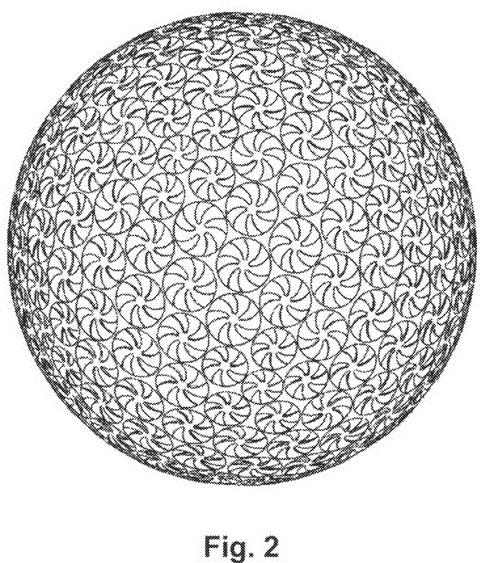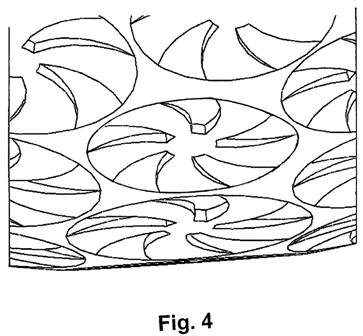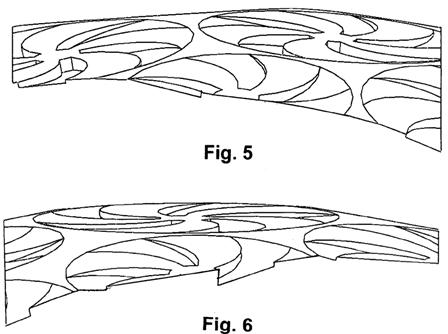This Ball Looks Like It Will Go Far
Ignoring any particular real technology, this ball design just looks like it would fly (although it does remind me of the Burrows Golf “Powersphere ”). I look at every published US patent application directed to golf ball dimple designs and I will often think “that’s cool” or “pretty innovative”, but this is the first time that I actually thought “something about that dimple just looks like it will have me averaging 300 off the tee.” Yes, I know, purely BS based upon the look of a ball; but if it got a pessimist like me thinking that, I bet by the time the marketing types got done running it through the hype machine the average golfer would be clamoring for it. You be the judge.
The design in question is found in an Acushnet patent application that published this week as US Pub. No. 20100304897 titled “Golf Ball with Rotational Protrusions Within a Dimple.” The application describes the invention as:
A golf ball includes an outer land surface and a plurality of dimples formed thereon. The dimples comprise protrusions on the inner surface of the dimple to energize or agitate the airflow over the dimpled surfaces to increase the aerodynamic performance of the golf ball. These protrusions include rotational elements arranged in various configurations and are fully contained within the dimple perimeter and do not extend beyond a chordal plane of the dimple. By improving the aerodynamic of the airflow over the dimpled surface of the golf ball, the outer land surface of the golf ball may remain robust to prevent premature wear and tear on the golf ball.



It goes on to explain:
[0030] FIG. 3 illustrates rotational elements 16 disposed on the land surface 18 of the dimple 12. As used herein, the land surface 18 of the dimple 12 is the concave surface of the dimple unaffected by the rotational elements defined on the dimple 12. For spherical dimples, the land surface 18 is spherical or arcuate. The land surface 18 may also be flat or may have any irregular shape known in the art. As taught in the ‘136 patent, the circumference of the dimples 12 optimizes the aerodynamic performance of the golf ball. Similarly, the perimeter of the protrusion elements 16 also contributes to and improves the aerodynamics of the golf ball. Advantageously, the protrusions of the present invention remedy a design issue known in the art, i.e., minimizing the land surface 14 of the golf ball for better aerodynamics but without increasing the wear and tear on the ball during repeated impacts by the golf clubs. In accordance to the present invention, the aerodynamic performance is increased by increasing the agitation of the boundary layer over the dimpled surfaces, and the land surface 14 may remain robust to resist premature wear and tear.
[0031] The present invention describes rotational elements 16 contained within the dimple perimeter and below the spherical ball surface. Dimples with protrusion type rotational elements provide further aerodynamic flight tuning to conventional dimple layouts with circular perimeter boundaries. Further, these profiles can provide an aesthetically unique dimple pattern.
Sign me up for a couple dozen!
David Dawsey – Keeping an Eye on Golf Ball Technology
PS – check out THIS recent post in which I questioned whether the traditional dimple has reached the end of its useful life; click HERE to read about another interesting Acushnet golf ball dimple patent application; and click HERE for an interesting Bridgestone patent application
PPS – click HERE to read more interesting golf ball patent posts
